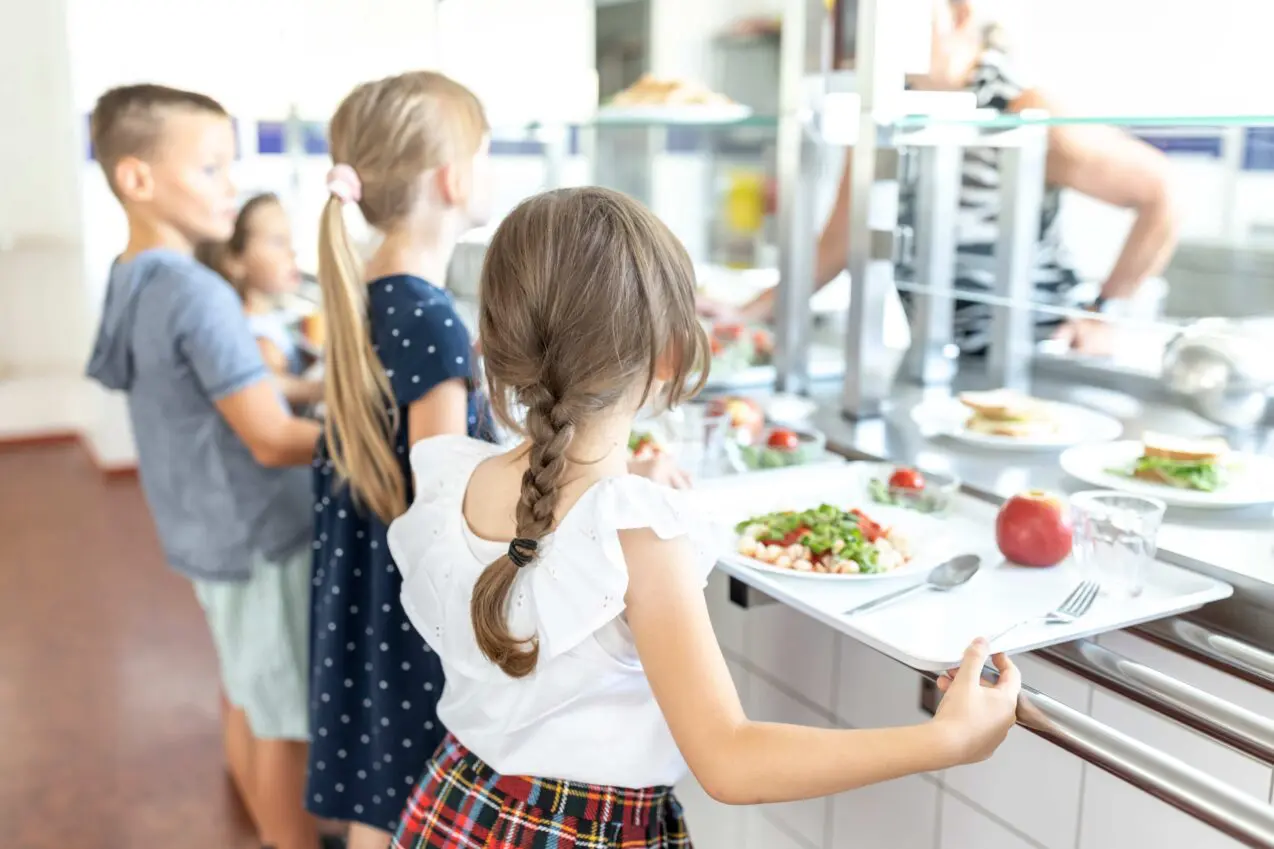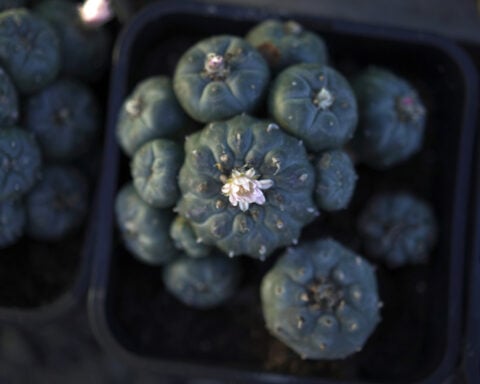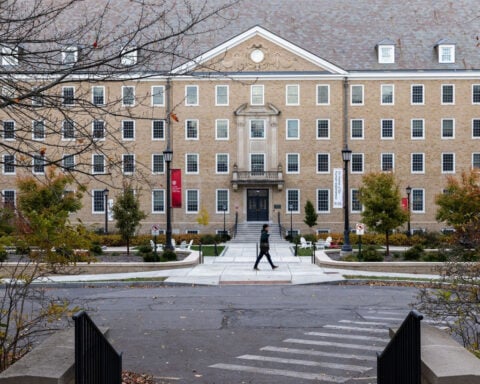The number of California schools offering vegan meal options has risen sharply over the past five years, with more than half of the state's largest school districts now providing daily plant-based choices for middle and high school students, according to a new report from environmental nonprofit Friends of the Earth.
The report reveals that 56% of California's 25 largest middle and high school districts now offer daily vegan options, up from 36% in 2019. At the elementary level, districts providing weekly vegan school meal choices increased from 16% to 60% during the same period.
This transformation in school cafeterias stems from a combination of factors, including student demand, state funding programs, and growing awareness of climate impacts. The shift reflects broader changes in youth dietary preferences, with research by food service provider Aramark showing that 79% of Generation Z members are willing to eat meatless meals at least once or twice weekly.
"California is always ahead of the curve, and we have been eating plant-based or plant-forward for many years - this is not a new concept in our state," said Erin Primer, who leads student nutrition for the San Luis Coastal district on California's central coast.
School districts have added 41 new vegan dishes to their menus in the past five years, including chana masala bowls, vegan tamales, and falafel wraps. These additions serve multiple purposes, offering climate-friendly options while expanding cultural diversity in school meals.
"A lot of school districts are recognizing that they can integrate more culturally diverse options with more plant-based meals," said Nora Stewart, author of the Friends of the Earth report. Stewart noted that dairy-free meals also benefit lactose-intolerant students, who are more likely to be students of color.
The expansion of vegan options aligns with climate action goals. The United Nations Food and Agriculture Organization estimates livestock production contributes 12% of global greenhouse gas emissions, with cattle and other ruminants being major methane sources. Animal agriculture also demands substantial water and land resources.
California's universal free lunch program has created a foundation for menu experimentation. Primer noted that removing cost barriers increases students' willingness to try new foods, stating, "Free food plus good food equals a participation meal increase every time."
The state has supported this dietary evolution through multiple initiatives. In 2022, California allocated $600 million to the Kitchen Infrastructure and Training Funds program, enabling schools to upgrade kitchen equipment and train staff in preparing fresh meals on-site.
Another program, the $100 million School Food Best Practices Funds, helps schools purchase locally grown ingredients. The Farm to School incubator grant program has provided about $86 million since 2021 for schools to develop programming focused on climate-smart or organic agriculture.
These programs have enabled schools to move beyond what industry insiders call "cooking with a box cutter" - merely heating pre-made meals - toward preparing fresh ingredients on-site. This shift has fostered innovation in plant-based cooking.
Primer developed a summer program teaching students about food origins in the San Luis Coastal district. The program, funded by state grants, allowed students to plant cilantro, meet local organic farmers, and learn about crop cultivation. This hands-on experience led to unexpected enthusiasm for plant-based meals in the cafeteria.
"We have had students tell us that this is the best dish they have ever had in school food. To me, I was floored to hear this," Primer said, referring to a vegan red lentil dal served with coconut rice. She observed that understanding food origins increased student appreciation and reduced waste.
Revolution Foods, a vendor serving school districts across California and Nevada, has responded to this trend by introducing an all-vegetarian menu. The company credits San Francisco Unified School District students for leading advocacy efforts to reduce meat in school meals. Their menu now includes four vegan options: an edamame teriyaki bowl, a bean burrito bowl, a taco bowl with pea-based meat alternative, and marinara pasta.
However, challenges remain in expanding vegan options across all California schools. The Friends of the Earth report found that among the 25 largest districts, only three elementary districts offer daily vegan options, unchanged since 2019. A quarter of reviewed districts provide no plant-based meal options, while another quarter limits vegan choices to peanut butter and jelly sandwiches.
The future of these initiatives faces uncertainty as state funding programs approach their end dates. All three major programs are scheduled to expire by the end of the 2024-2025 school year.
Nick Anicich, program manager for Farm to School at the state Office of Farm to Fork, said schools must find ways to continue these programs independently. "We will see how schools continue to innovate and implement these initiatives with their other resources," he said.
Stewart believes California's progress sets "a powerful example" for nationwide school lunch programs, demonstrating possibilities for improving both quality and sustainability.
For Primer, success lies in presenting plant-based meals as an opportunity rather than a limitation. "That has been a really important focus for us. We want [to serve] food that is just so good, everybody wants to eat it," she said. "Whether or not it has meat in it is almost secondary."
This approach mirrors a broader national movement toward plant-based school meals. Baltimore City Public Schools removed meat from Monday lunch menus in 2009, and New York City Public Schools, the nation's largest district, followed suit a decade later. New York City has since expanded its plant-based initiatives under Mayor Eric Adams with "Plant-Powered Fridays."

 US applications for unemployment benefits hold steady, but continuing claims rise to 3-year high
US applications for unemployment benefits hold steady, but continuing claims rise to 3-year high
 Peyote sacred to Native Americans threatened by psychedelic renaissance and development
Peyote sacred to Native Americans threatened by psychedelic renaissance and development
 Trump has pressed for voting changes. GOP majorities in Congress will try to make that happen
Trump has pressed for voting changes. GOP majorities in Congress will try to make that happen
 Middle East latest: 5 Palestinian journalists killed by Israeli strike, Gaza Health Ministry says
Middle East latest: 5 Palestinian journalists killed by Israeli strike, Gaza Health Ministry says
 Why this Mexican American woman played a vital role in the US sacramental peyote trade
Why this Mexican American woman played a vital role in the US sacramental peyote trade
 What is the Native American Church and why is peyote sacred to members?
What is the Native American Church and why is peyote sacred to members?
 US holiday retail sales come in above forecast, Mastercard says
US holiday retail sales come in above forecast, Mastercard says
 AI is a game changer for students with disabilities. Schools are still learning to harness it
AI is a game changer for students with disabilities. Schools are still learning to harness it
 Discover how education institutes in California are revolutionizing lunch menus with vegan school meal options.
Discover how education institutes in California are revolutionizing lunch menus with vegan school meal options. 






